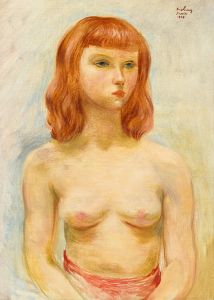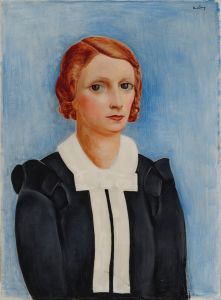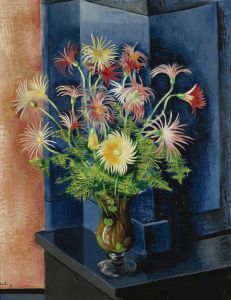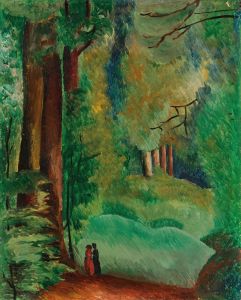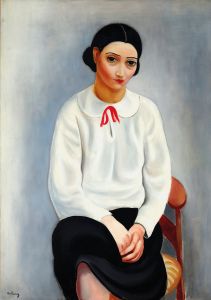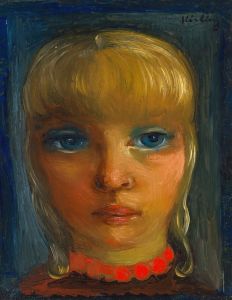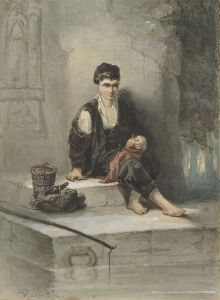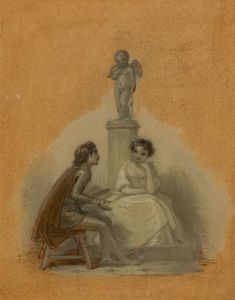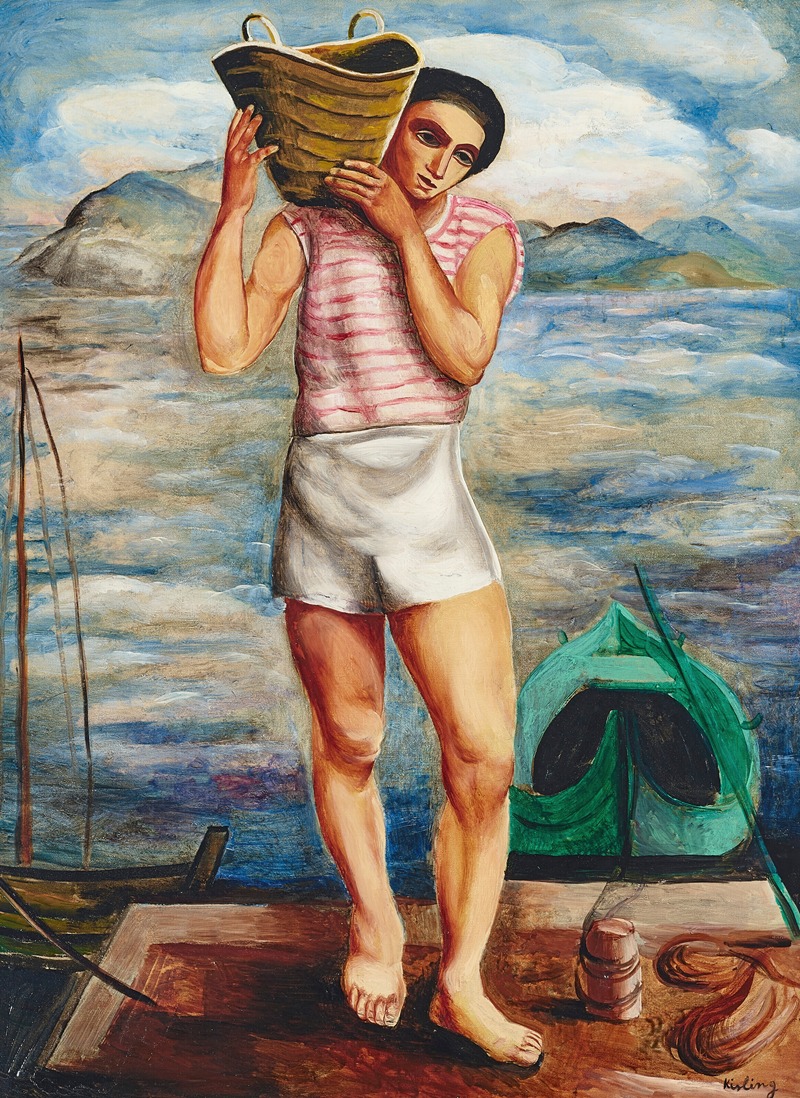
Le Pêcheur
A hand-painted replica of Moïse Kisling’s masterpiece Le Pêcheur, meticulously crafted by professional artists to capture the true essence of the original. Each piece is created with museum-quality canvas and rare mineral pigments, carefully painted by experienced artists with delicate brushstrokes and rich, layered colors to perfectly recreate the texture of the original artwork. Unlike machine-printed reproductions, this hand-painted version brings the painting to life, infused with the artist’s emotions and skill in every stroke. Whether for personal collection or home decoration, it instantly elevates the artistic atmosphere of any space.
Moïse Kisling, a Polish-born French painter, is known for his vibrant and expressive works that often feature portraits, landscapes, and still lifes. One of his notable paintings is "Le Pêcheur" (The Fisherman), which exemplifies his unique style and artistic contributions during the early to mid-20th century.
Kisling was born on January 22, 1891, in Kraków, which was then part of the Austro-Hungarian Empire. He moved to Paris in 1910, where he became an integral part of the Montparnasse artistic community. This area was a hub for many avant-garde artists of the time, and Kisling was no exception, mingling with contemporaries such as Amedeo Modigliani, Marc Chagall, and Jules Pascin. His work was influenced by the vibrant artistic environment of Paris, as well as by his experiences during World War I, where he served in the French Foreign Legion and was wounded in battle.
"Le Pêcheur" is a testament to Kisling's skill in capturing the essence of his subjects with a blend of realism and expressionism. While specific details about the painting's creation, such as its exact date and the identity of the fisherman depicted, are not widely documented, the work is characteristic of Kisling's style during his mature period. His paintings often feature bold colors and strong outlines, which are evident in "Le Pêcheur." The use of color and form in this painting highlights Kisling's ability to convey emotion and character, drawing the viewer into the world of the fisherman.
Kisling's portraits, including "Le Pêcheur," are noted for their psychological depth and attention to detail. He had a unique ability to blend elements of traditional portraiture with modernist influences, creating works that are both timeless and contemporary. This painting likely reflects his interest in everyday subjects, capturing the dignity and resilience of the working class, a theme that resonated with many artists of his time.
Throughout his career, Kisling exhibited widely, gaining recognition in both Europe and the United States. His works were featured in numerous exhibitions, and he became a well-respected figure in the art world. Despite the challenges he faced, including the rise of Nazism and the subsequent impact on Jewish artists, Kisling continued to produce art that was both personal and universal.
"Le Pêcheur" remains an important part of Kisling's oeuvre, showcasing his mastery of color, form, and composition. It is a reflection of his ability to capture the human spirit, a quality that has ensured his place in the history of modern art. Today, Kisling's works are held in various public and private collections, appreciated for their beauty and emotional depth.
In summary, while specific details about "Le Pêcheur" are limited, the painting is a significant example of Moïse Kisling's artistic legacy. It embodies the qualities that define his work: vibrant color, expressive form, and a deep connection to the human experience.







